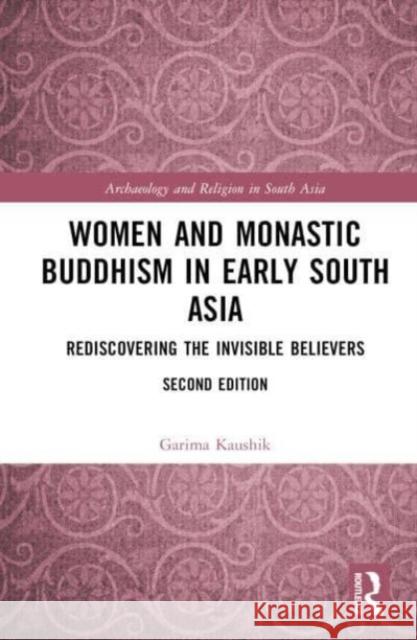Women and Monastic Buddhism in Early South Asia: Rediscovering the Invisible Believers » książka
Women and Monastic Buddhism in Early South Asia: Rediscovering the Invisible Believers
ISBN-13: 9781032156187 / Angielski / Twarda / 2026 / 280 str.
Women and Monastic Buddhism in Early South Asia: Rediscovering the Invisible Believers
ISBN-13: 9781032156187 / Angielski / Twarda / 2026 / 280 str.
(netto: 550,53 VAT: 5%)
Rabat: -5%
Najniższa cena z 30 dni: 603,49
22-01-2026
Darmowa dostawa!
This book presents gender as a framework to offer unique insights into the sociocultural foundations of Buddhism. It highlights the multiple roles played by women as patrons, practitioners, lay and monastic members and the like within Buddhism.
This book presents gender as a framework to offer unique insights into the sociocultural foundations of Buddhism. Moving away from dominant discourses that discuss women as a single monolithic, homogenous category – thus rendering them invisible within the broader religious discourse – this monograph examines their sustained role in the larger context of South Asian Buddhism and reaffirms their agency. It highlights the multiple roles played by women as patrons, practitioners, lay and monastic members and the like within Buddhism. The volume also investigates the individual experiences of the members, and their equations and relationships at different levels – with the Samgha at large with their own respective Bhikşu or Bhikşunī Samgha, with the laity, and with members of the same gender (both lay and monastic). It rereads, reconfigures, and reassesses historical data in order to arrive at a new understanding of Buddhism and the social matrix within which it developed and flourished.This new edition draws on recent archaeological data from ancient Buddhist sites in Sri Lanka and recently compiled ethnographic data from convents in Spiti valley in Himachal Pradesh, India. It assesses if the working model formulated for the identification of gendered structures at sites in India holds good for sites across South Asia and highlights the presence of women within the monastic circles in varied roles. Bringing together archaeological, epigraphic, art historical, literary as well as ethnographic data, this volume will be of interest to researchers and scholars of Buddhism, gender studies, ancient Indian history, religion, and South Asian studies.











